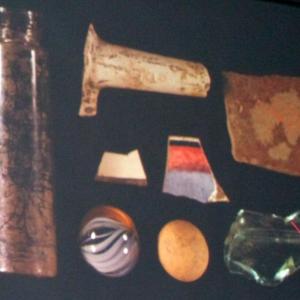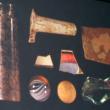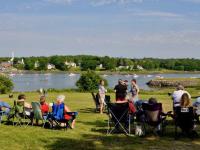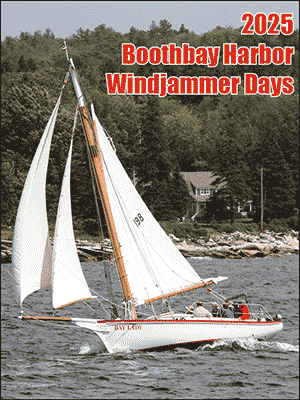No historic registry for South Thomaston archeology dig, bridge replacement to start in 2017
 Artifacts found at the believed site of a blacksmith shop in South Thomaston.
Artifacts found at the believed site of a blacksmith shop in South Thomaston.
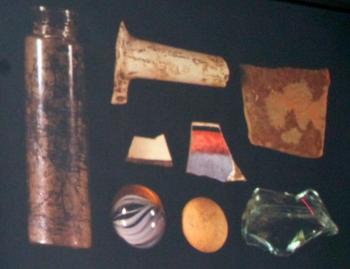 Artifacts found at the believed site of a blacksmith shop in South Thomaston.
Artifacts found at the believed site of a blacksmith shop in South Thomaston.
SOUTH THOMASTON — After unearthing a full set of split granite steps at the edge of the South Thomaston Library last autumn, the archeology team from Maine Historic Preservation Commission moved their shovels to the next unit over. Their digging in this new area yielded nothing but mixed clay. Truly. Nothing. So they shifted sideways to the next unit, dug down, and found more of the wall they’d expected to find in the unit in between.
Perplexed, they wracked their brains, sought their historical resources, and questioned why the Ebenezer Hall house of a century past would be absent a portion of cellar wall at just that precise spot. No answers came to mind.
“So, what do archeologists do? We keep digging,” project leader Leith Smith told the South Thomaston Historical Society Thursday, April 14. Smith was at this function to present the findings of the Phase I and Phase II historical assessment of the land slated for bridge widening and sidewalk creation in late 2017.
The team member with the shovel pushed even deeper into the soil until he struck something solid and unexpected within the mixed clay soil of another lifetime. It was hard. It was white. It was modern.
On a hunch, Smith walked to the roadside ditch and found the end of the library’s PVC drainage pipe, lined up perfectly with the unexpected material in the dig site. Not only had a previous construction crew demolished a part of a treasured artifact, the pipe itself could have been routed in a different direction for a far shorter distance.
“They must have had a lot of time on their hands,” Smith said.
And so it goes that evidence in the form of slag proves the existence of a blacksmith shop. Yet the majority of possible artifacts from this profession are lost, along with most of the original building, to the roadways that followed.
Before the current library and historical society resided on the strip of land at the bend of Route 73, the site’s terrain was mounded. Yet when the library was built, the land was leveled, mixing several generations of building structures with modern-day infill.
Most of the artifact pieces In the Hall’s cellar, including a piece of chrome whiteware dating back to the 1830s and 1840s, had nothing to do with the house, according to Smith.
At the blacksmith site, the team found a brass curtain tieback from the later 18th Century and a piece of handwrought material dating back to the 1790s at the earliest. A couple marbles are believed to have belonged to the Hall children. And pieces of a 7-inch-tall creamware ale tankard from between 1875 to 1915 gained excitement from the team.
“I’ve never found a vessel like this,” Smith said.
Where a post office once resided, the crew unearthed a pig bone, lead-painted pottery, and a piece of printer’s type.
Polished stone from the stone-polishing mill, lime rock from the kiln, glots of yellow okra paint represented a paint shop, and buttons may be evidence of a tailor shop on the corner.
And at the site of the mill, on the opposite side of the public landing parking lot, modern-day bottles represented the infill pushed among the dig site after a previous bridge was constructed over the winter of 1930-31.
Vertical timber representing very early mill design mixed were found mixed among immovable boulders.
The archeology team plans to be present at the start of the construction in order to see what mill machinery may be hidden under the rocks.
See previous article
South Thomaston archeology dig unearths evidence of early settlements
Event Date
Address
United States

